15 Best Resource Management Tools for your organization
To manage a business or a project, you not only need to manage the quality of the work when it is completed; you also have to cover other factors that affect it, such as financial resources, inventory, human skills, production, resources, or information technology (IT) and natural resources. The way you plan, organize, and manage resources in your team or your organization has a significant impact on project success. So managing resources is more important than ever to make a real difference in the workplace.
If you are new to the concept of resource management, you might easily get confused and mistaken by many terms, such as planning, allocation, resource scheduling and the techniques, and methods involved. Besides, the question of which tool to use to manage resources is also a headache for businesses.
Therefore, in this article, I will briefly discuss the concept of technical management and introduce 15 best resource management tools for you to manage your team.
What exactly is resource management?
Resource management is an activity where businesses manage various resources within the company effectively. These resources can be intangible such as labor productivity, time, and tangible such as equipment, machinery, supplies, and finance.
Resource management is closely related to planning so that suitable resources are allocated to the respective tasks. Also, resource management involves scheduling and budgeting for people, projects, equipment, and supplies.
Although resource management is often applied to project management, it can also be applied to many other business management areas. In general, small businesses will need to pay attention to resource management in several areas, including:
-
Finance: Can the company still meet current expenses or afford to invest in new equipment or train employees?
-
Personnel: Has the company recruited the right people? Does the company need to hire more people if there are new customers, and what skills will those people need?
-
Workplaces and manufacturing: Are the workplaces and manufacturing facilities adequately equipped? Can the workspace be easily managed?
-
Equipment: Is there a set of tools needed to work? Are machine maintenance and repair costs expensive?
-
Technology: What technology does the business need to maximize its potential and save financial resources to reallocate to finance what is lacking?
When being used for project management purposes, resource management is often applied for leveling and smoothing.
Resource leveling is a way to avoid oversupply or excessive inventory by keeping the resource stock at an average level. There is now specialized software that can help determine the average that businesses can refer to. Resource leveling is also used in the references on the time when required to complete a project. With a balance of time, the start date and end date will be adjusted to suit the available resources. However, leveling resources may extend the project duration.
Planful software is your all-in-one resource planning and management solution, featuring an elegant and user-friendly interface. While it may appear deceptively simple, Planful boasts a robust set of features that empower project managers to efficiently plan and manage resources. Explore some of the standout features that make Planful an essential tool:
- Resource Allocation: Effortlessly assign and manage resources for your projects with precision.
Resource smoothing is a scheduling technique that aims to meet deadlines. The goal of resource smoothing is to use resources continuously over time.
In short, resource management is the pedagogy making sure that a company is using its resources and materials wisely and effectively.
Related articles
- 12+ Best Free Market Research Tools
- 10+ Shopify Spy Tools
- Best 13 FREE Stock Video Websites
- 15+ Best Online Survey Tools for Your Business
Why is resource management important?

Resource management is considered a part of project management, helping the project leader understand all about progress, equipment, costs, etc. The taboo in business is wastefulness. Therefore, resource management focuses mostly on efficiency. Once you know what you need to do to make the project successful, you can arrange to use them effectively.
For some companies, optimal efficiency is so vital that companies have a single person specializing in resource management, only known as a resource manager. While project managers are responsible for creating and assigning tasks to complete projects, resource managers are responsible for allocating the necessary resources to make the project successful and attain the most optimal effect.
There are some benefits of resource management:
- Avoid unforeseen problems: By knowing your resources and planning to use them, you can fix the holes or issues before they occur.
- Preventing exhaustion: Effective resource management allows you to avoid being alone or over-dependent on resources by better understanding your team’s workload.
- Provide a safety net: Most of the unsuccessful projects today have one reason is the lack of resources. Resource management and planning show that you have done everything best with what you have at hand.
- Building transparency: Other groups can pick up visibility into your team and arrange appropriately on the off chance that your group is at most enormous capacity or accessible to require on unused ventures.
- Effectively measurement: With a high-level understanding of what’s required to oversee and execute an up and coming venture, you’ll viably arrange and degree ROI
15 best resource management for your organization
1. Toggl Plan
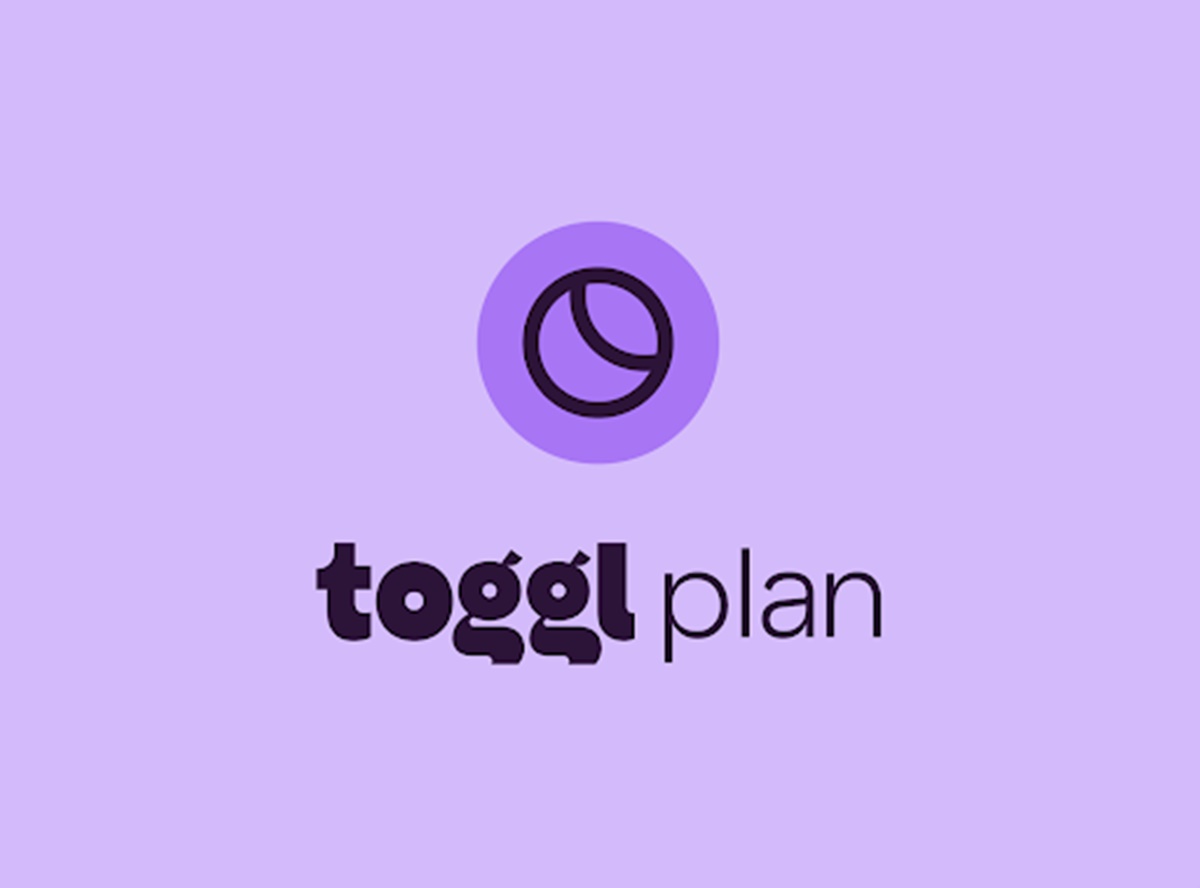
Toggl Plan is a resource planning and management tool with a beautiful and easy to use interface. Although it may seem simple, it has powerful features that allow any project manager to plan and manage resources properly. Some special features of Toggl Plan include resource allocation, intuitive drag, and drop, time allocation for smart bookings, and reports.
Besides, Toggl Plan also allows users to import tasks from many third-party applications such as Trello or Github. Compared to other tools, Toggl Plan comes with many integrations that allow teams to communicate and collaborate. It is suitable for both small and large companies. Toggl Plan is provided with a free plan that will enable users to add five members to the group. For teams that need more members, the premium plan starts at $8/month/user.
2. Niftypm.com
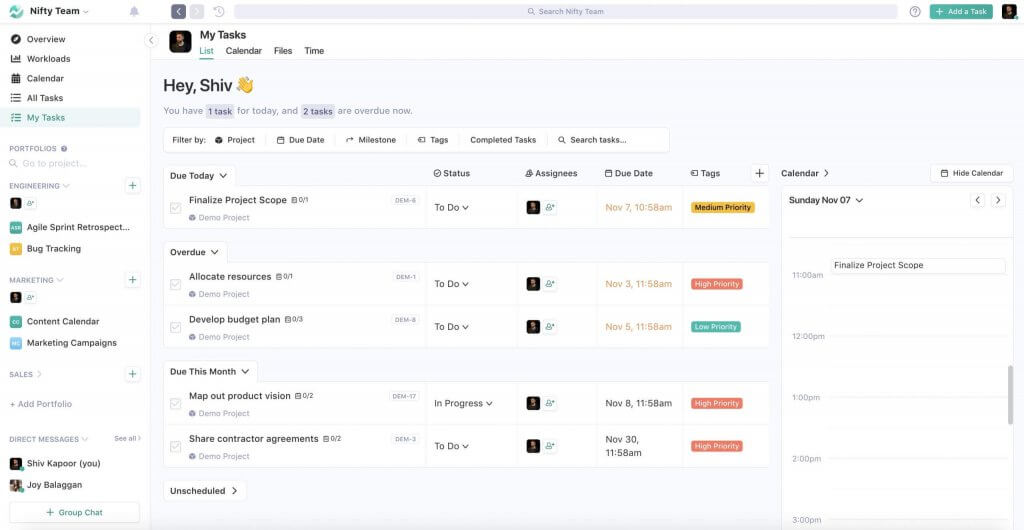
Nifty is a state-of-the-art task management software designed to optimize team productivity and streamline project operations. Its comprehensive suite allows seamless management of tasks, projects, and resources. Through a calendar-focused interface, Nifty facilitates intuitive employee oversight, enabling precise workload management, meticulous timesheet tracking, and efficient scheduling. Additionally, the platform simplifies project supervision with its robust Gantt charts, empowering users to organize tasks, establish links between them, and allocate projects efficiently.
Furthermore, Nifty simplifies the process of generating and exporting reports in CSV or PDF formats, providing valuable insights through data analysis. The tool also offers an automated reporting feature, ensuring regular updates—be it daily, weekly, or monthly—keeping users informed and in control of their projects and resources. Nifty offers a free forever plan to get you started with paid plans starting at only $5/month per user with all core features included.
3. Mavenlink

Mavenlink is a project management tool that allows users to manage resources. It includes all standard resource planning features like resource allocation, quick editing, etc. Moreover, it also provides real-time prediction features. The most special thing when it comes to Mavenlink is its resource shaping tool. This special feature allows users to identify necessary resources in a workweek and automatically allocate tasks to the available positions.
Mavenlink is also integrated with file sharing, task control, timesheets, and reports. Also, Mavenlink has API features to be integrated with other services or with custom solutions. Prices for starting using Mavenlink is $19/month for a team of up to 5 members.
4. 10,000ft
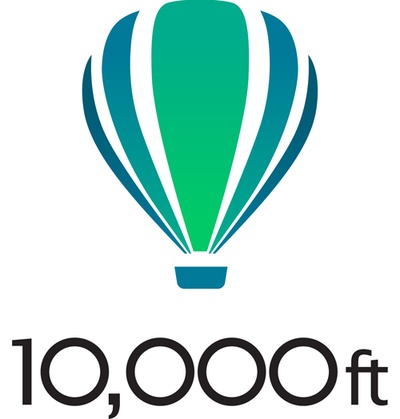
10,000ft is a tool to help businesses manage resources and track time to reduce the likelihood of unexpected incidents in the workplace. You can use it to take full control of your resources, reduce the time to find available resources, and forecast future workloads.
In addition to project planning, gantt-style projects, 10,000 ft are also integrated with timesheets, budget-balancing for projects, and easier time management. 10,000ft offers a free 30-day trial policy. After that, the pricing starts at $150/month for the Basic Package.
5. Harvest
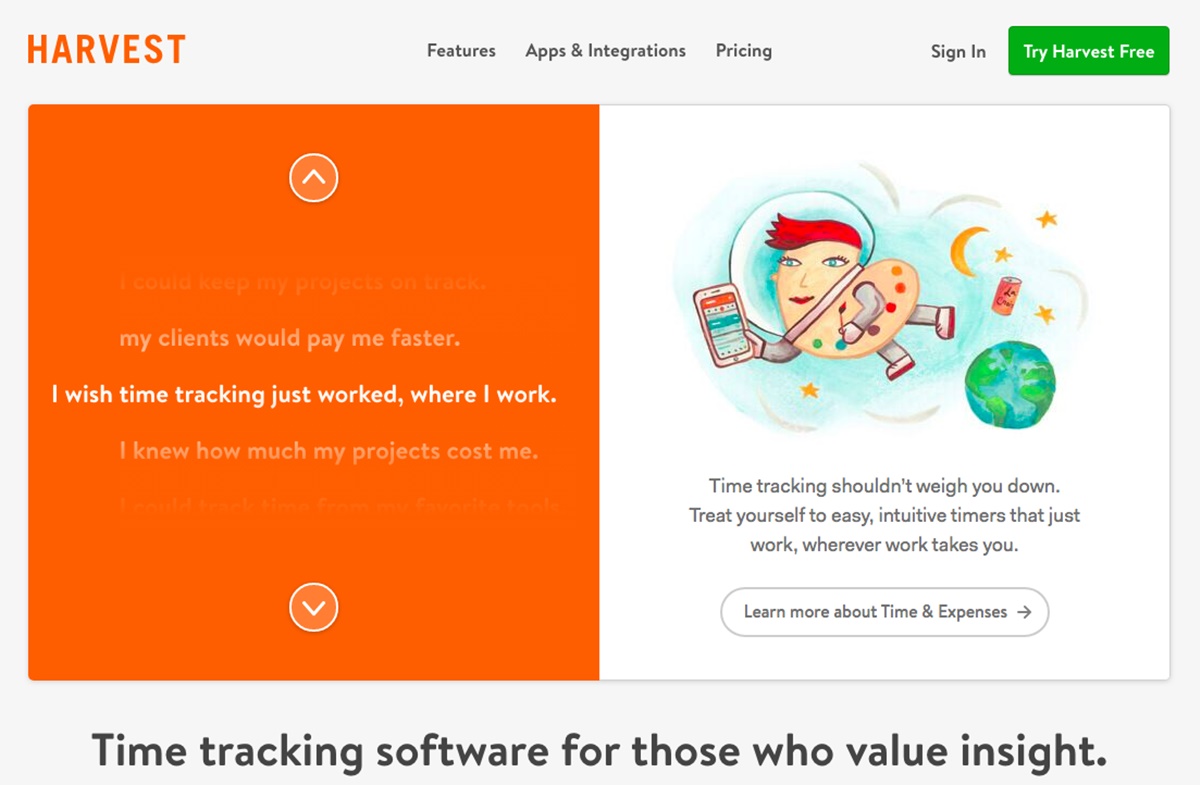
Harvest is a project time tracking tool that allows teams to transform timesheets into detailed reports. Harvest is commonly used in iOS and Android applications. It is also used in desktop time trackers and Chrome and Safari extensions.
Using Harvest, you can schedule your team and track their workload. The collected data will help you improve the estimation formulas and work schedules. Timesheets can then be turned into detailed reports that allow managers to track employee performance, overtime, and track projects’ progress. With Harvest, experts can create time-based invoices and send them to customers directly from the app. Harvest comes with several integrations such as project management, accounting, query tracking deals, CRM, and productivity calculations. If you are working on a Mac, you might also want to check out this list of macOS time tracking apps.
Harvest also has a 30-day free trial policy; next month, users will start using from $12/user/month.
6. Ganttic
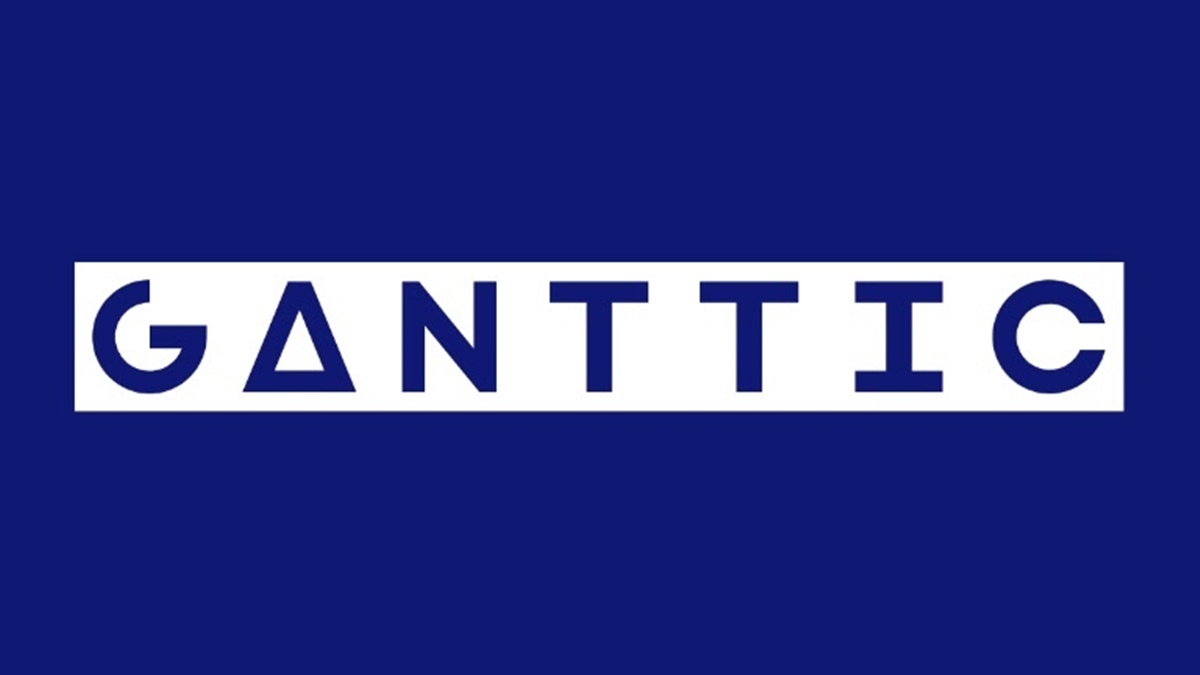
Ganttic is a resource planning software that helps users keep track of tasks, projects, and resources. You can manage your employees in the calendar view to control workload, timesheets, and schedules. You can also track projects by viewing Gantt charts, placing tasks, adding links between them, and placing projects periodically.
Besides, creating reports and exporting them in CSV or PDF format is also an exciting feature of this tool. You can also set up automatic reports to receive daily, weekly or monthly updates.
Ganttic gives you a 14-day free trial for ten resources. Charges are then calculated, starting at $ 25 / month for up to 20 resources.
7. Elapseit
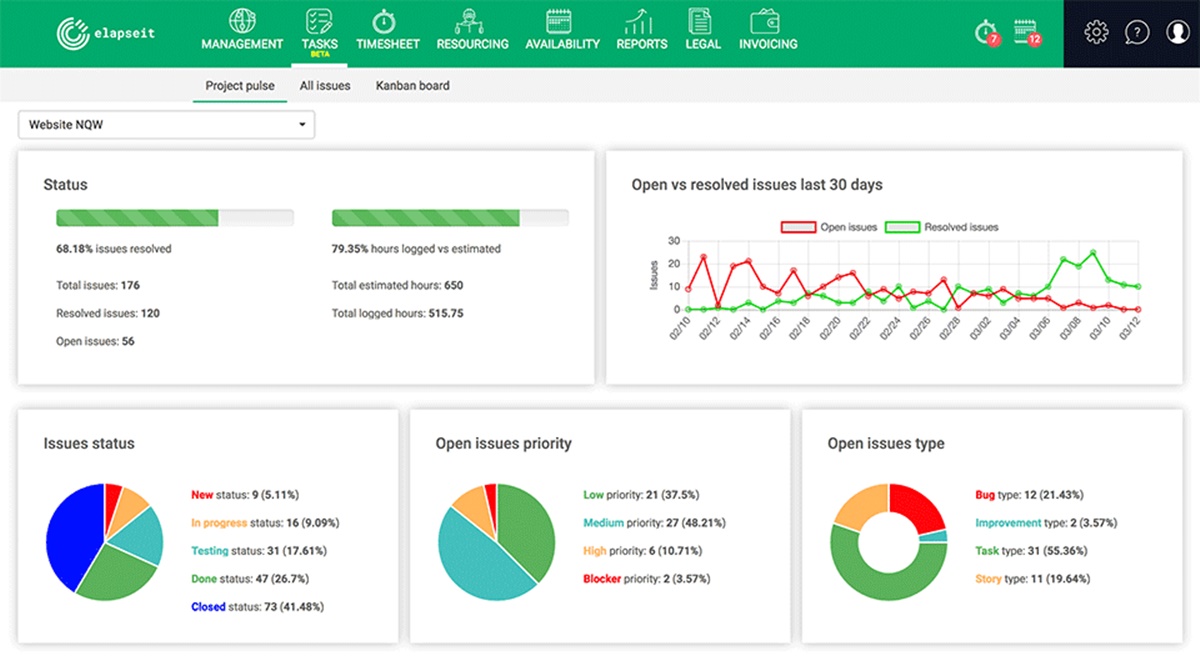
Elapseit is a tool built to provide a safe and complete user experience while allocating and managing corporate resources. Elapseit is simple, intuitive, and brings creative functionality. Some important used features are: Resource scheduling, Time-tracking, Leave management, Invoicing, Legal document, etc.
Elapseit is the best choice for all companies from small to medium size to large businesses, and it fits perfectly with all types of projects. Currently, Elapseit has a free trial version that includes all the features. When users start using the price will be about $ 5USD/user/month.
8. Resource Guru
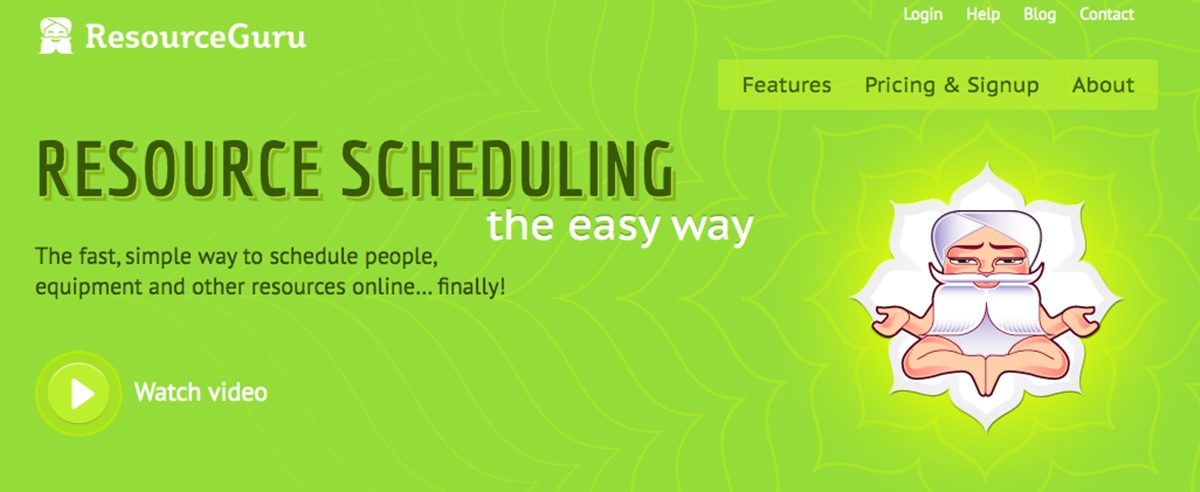
Resource Guru is one of the oldest resource management software on the market. However, it is still very popular with agencies and companies working with many customers. Resource Guru provides features like filtering, checking group availability, resource allocation, reporting, time zone support, etc.
Resource Guru also allows users to manage paid leave and sick days so that project managers can get a better overview of available resources. Each Resource Guru user will have his or her dashboard. Resource Guru also prevents uneven allocation of resources by setting each resource’s availability and through waiting lists. It also supports so many project managers can use it at the same time without having to wait or compete whose turn it is. Resource Guru also offers a 30-day free trial. When the trial ends, its price is $2.50/user/month.
9. Runn
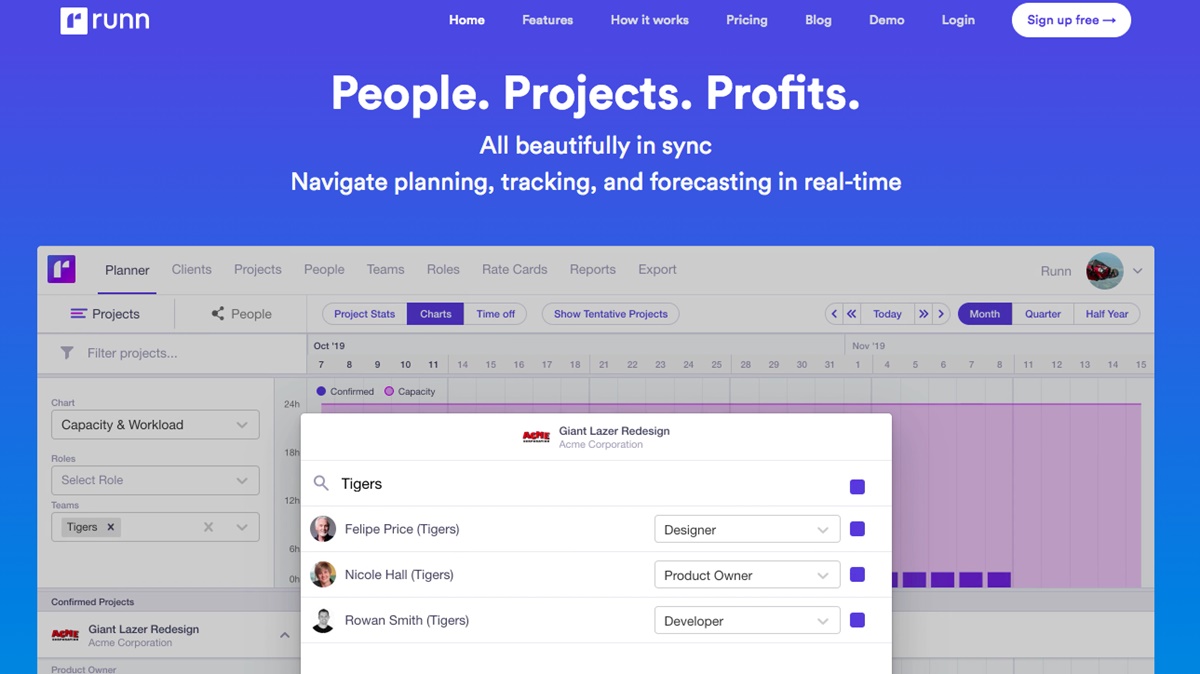
Runn is a modern tool for planning, managing capacity, and needs. It also has built-in time management, predictive capabilities that help managers manage groups remotely. Runn uses a Planner interface that gives users the ability to view all projects and human resources in your organization, allowing you to identify and predict overload risks and avoid conflicts quickly about resources, workforce, and time.
Compared to other resource management tools, Runn can also make understandable financial forecasts and related KPIs on to track the profits of your company, project performance, cost overruns, and actual variance compared to the plan. This app has built-in time tracking so you can better understand your time spent than you intended.
Currently, Runn allows users to use it for free until July 1, 2021. After the free time, Runn will charge $10/person or $30/person for each package that customers choose.
10. Monday.com
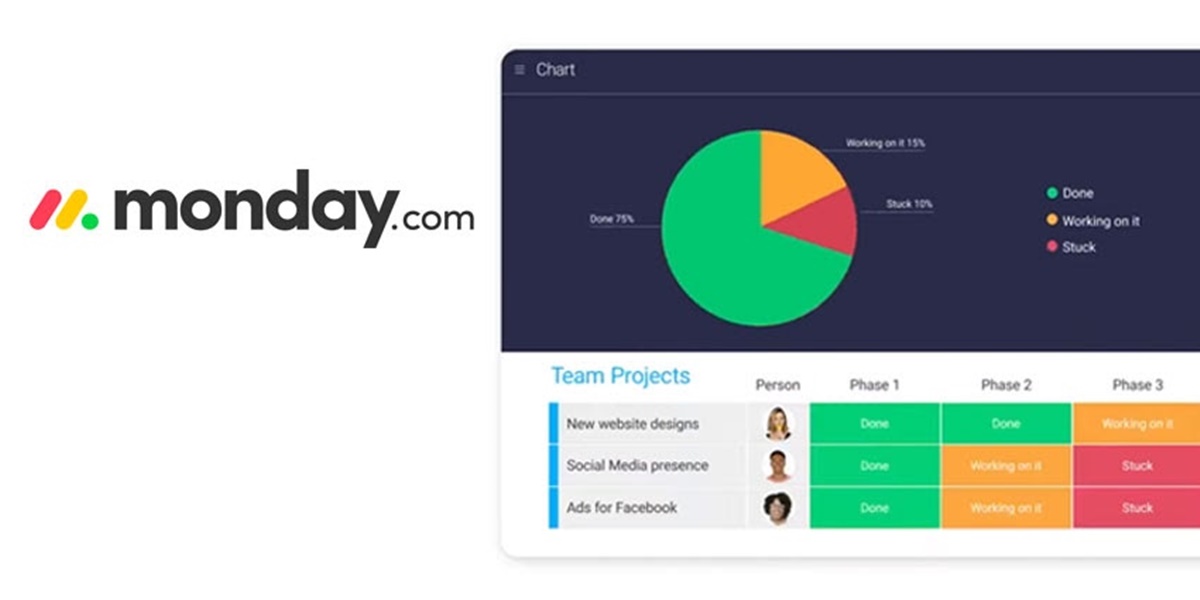
If you need a task management tool that works smoothly with your business teams, Monday.com will be a noticeable choice. This job management software has a more visually oriented productivity software that allows project managers to delegate tasks and track every step in detail that team members are taking.
Also, you can create to-do lists, share files, and communicate with colleagues. This job management software provides quite insightful views on projects, allowing you to edit important details such as owner status, priority, and project duration. What’s more, there’s an integrated chat function that will enable you to discuss tasks and update daily tasks with each team member.
11. Float

Float is a resource management software for agencies, studios, and companies. It usually provides simple staff management features. Its staff scheduling feature allows users to manage bookings, visualize team workloads, and assign tasks.
With Float’s great team management features, project managers can quickly discover available human resources, manage contractors, and find employees with their cards. Another interesting thing is that you can access Float through an iPhone application. Float allows you to try it for free for 30 days. The paid package starts from $5/person/month.
12. Saviom

Saviom is a leading expert in software that helps increase project efficiency. Some of the resources in Saviom’s resource management modules help many businesses in resource management, such as Smart resource scheduling module, which helps you overcome work imbalances, Resource planning module to monitor and schedule resources while maintaining them, etc. You can also synchronize resource and project schedules across your business with Saviom’s resource management system. Saviom also integrates a skill store that makes it easy to profile resources, find and combine future job skills.
Saviom will set a custom tiered pricing such as Saviom tools, licenses, and lites. It operates by role-based access and ensures full control over the data that will belong to you.
13. eResource Scheduler
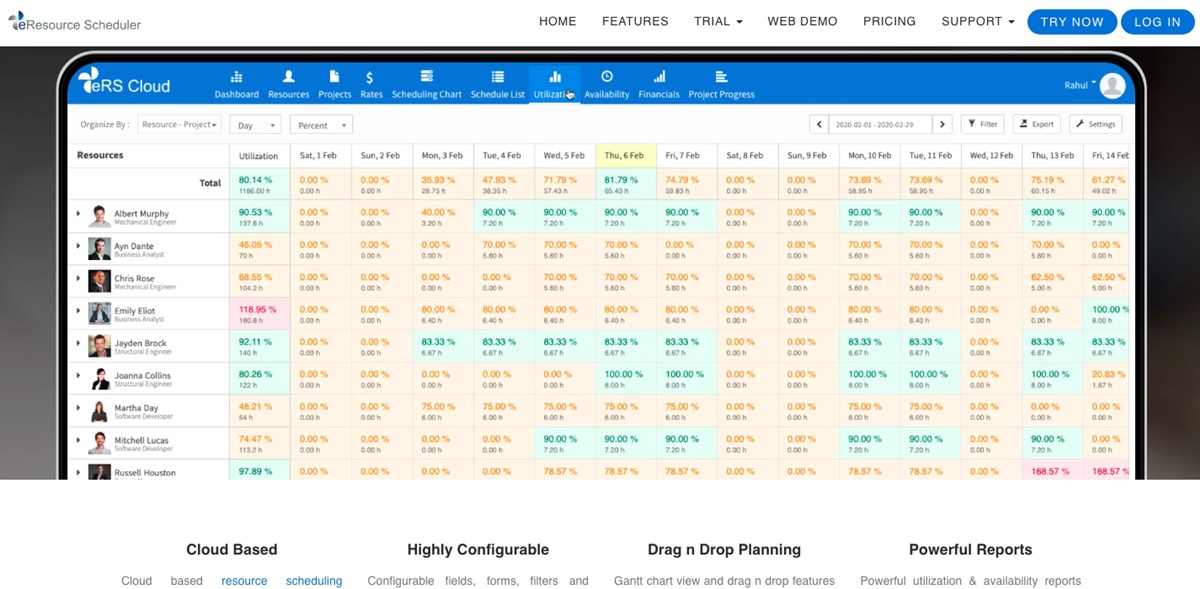
eResource Scheduler is a resource planning tool that provides both Cloud and On-Premise versions with easy-to-use configuration. It has features including a dashboard that highlights important information on one screen, and a variety of user-defined fields that allow you to capture complete information about your projects.
eResource Scheduler also provides features such as charts, scheduling, resource views, projects, and roles and users. eResource Scheduler also provides the option to plan at both project and task level. Another important feature of eResource Scheduler is the time table and financial module. This feature helps users to complete projects by cost and payment ratio and forecast reports. eResource Scheduler gives users a 14-day free trial of the virus. When the free time expires, the price will be $5/resource/month.
14. Paymo
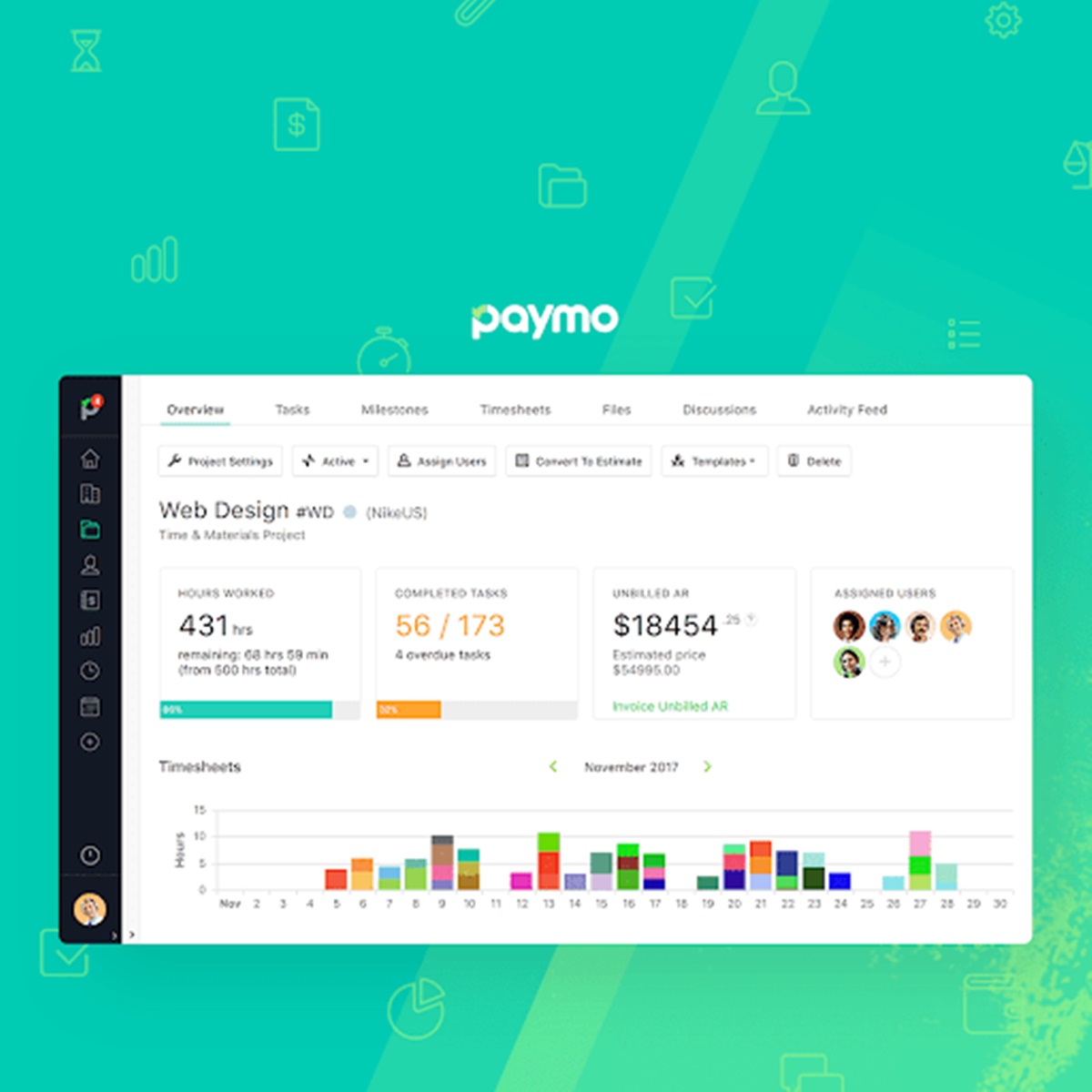
Basically, Paymo is a resource management software that can help you significantly cut your booking time. You can track your team’s current and remaining workloads, number of holidays, and project budgets on a single timeline. Paymo is set up automatically based on the task details you have entered earlier. With Paymo, all team members have access to their schedules to see what they need to do.
Besides, Paymo has been integrated with productivity and invoice applications such as Slack, Google Calendar, and Adobe CC to support the entire team’s management. After the free trial, users will choose two paid packages of Paymo, starting from $11.95/user/month to use.
15. Clarizen
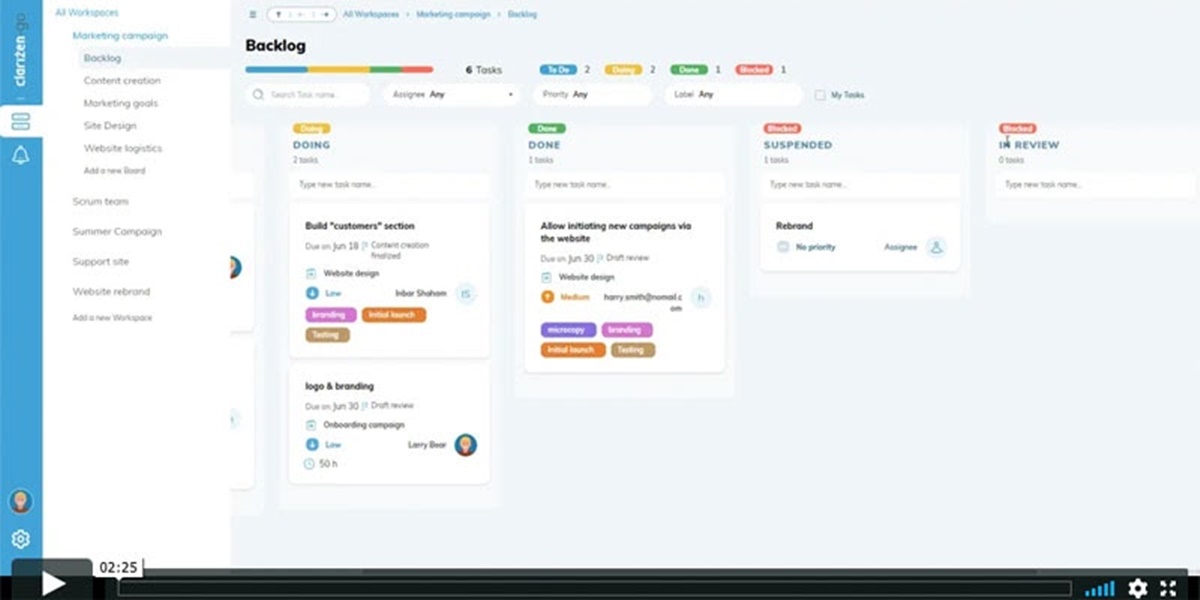
Clarizen is a tool that combines high-quality project management and teamwork. This is the only solution that provides a clearly defined and easily distinguishable work structure. Clarizen provides centralization and sharing of resources, developing strategies, and connecting people for a common purpose. Clarizen also allows users to work with a flexible, intuitive interface, suitable for their working style. Users can also create automated and repetitive processes with Clarizen’s workflow and quick alerts feature.
16. Hub Planner

Hub Planner is a powerful personnel management system with many useful resource management features. Hub Planner owns many different views by resource, team, or by the project. In addition to resource management, Hub Planner also has other features such as integrated timesheets with powerful approval processes, dashboards, and dynamic reporting tools. You can completely set the schedule, solvency, and profit at a glance.
The great thing about Hub Planner is that you will shape the product roadmap and even fund new features. You can further customize or remove product extensions to increase functionality or turn off functions you don’t need. Hub Planner starts at $7/user/month after 60 days free trial.
Resource management best practices and techniques
Here are some helpful techniques and practices that you should apply to manage your resources well:
1. Understand what resources are missing and focus on them
The lack of resources will make it impossible for you to plan in detail and disrupt the project’s implementation. This case, usually, you can employ according to the 80/20 rule. The 80/20 rule is interpreted as 80% of the effect (or resource constraint) coming from 20% of the resource. You need to focus on the limited resources and plan around their availability.
Consider leveraging employee record software here so you can have a skills matrix for all your employees allowing you to more effectively resource for important tasks.
2. Agree on a common approach to prioritize work on shared resources
You should create a standard grading/evaluation process that underpins objective decision-making. Unintended work supervision can cause you to underestimate your ability and cause delays in progress. Remember that people who are overly attached can easily lead to quality problems.
3. Understand the different ways to work across organizations and resources
You can benefit from different work types and even different groups within an organization if you have a specific method to reconcile them. Make sure the tools and methods are selected appropriately and are effective. A more standardized roll-up can provide the metrics needed for a holistic view of your organization. This will allow your organization to plan, manage, and distribute the work properly. For instance, accounting has different and specific work methods; therefore, resource management should be suitable for them. So you should have a base knowledge of the accounting project management guide for accountants.
4. Resource management is an ongoing process
You should understand that conflicts that occur because of unexpected events and changes happen frequently and inevitably. Let’s work together to resolve resource conflicts based on immediate priorities and lower priorities that are not really necessary.
5. Manage tasks and resources using a mixture of details
You should plan work, manage tasks, and report time in detail to be easily managed. However, not all jobs must use the same level of detail. Find out the specific standards for each situation. Planning work is usually the most detailed, while time reporting can simplify the process to a greater degree of accuracy. When assigning resources to work, long-term tasks should be done at a high level, and near-term tasks should be understood so that they can be planned in detail.
Further readings
- 33+ Best Price Comparison Websites & Apps
- 19+ Best Landing Page Builders
- Top 20+ Best Photo Editing Apps
- 10+ Terms And Conditions Generators
Final words
Resources management may sound complicated, but it is not really difficult to grasp its core and the tools to operate it smoothly. Resource management should be an essential part of a group project management process so that you can use the right resources at the right time, and anticipate potential problems in the future. By operating on a resource management tool, you can save a lot of time and effort. Hopefully, with the 15 resource management tools to manage your team that I introduced above, your businesses will find a powerful support technology to help you complete projects most conveniently and correctly.
New Posts






